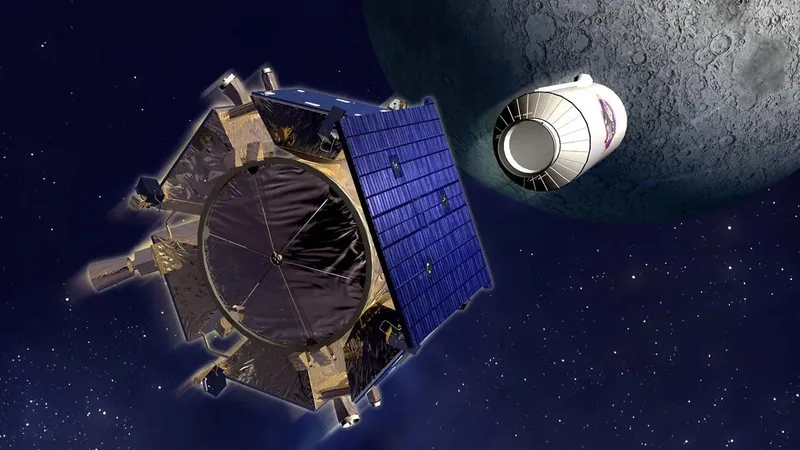
Scientists Uncover LCROSS Impact Site on the Moon After 15 Years — What This Means for Future Lunar Exploration!
2024-10-09
Author: Arjun
Introduction
In a groundbreaking revelation, scientists have successfully pinpointed the impact site of NASA's Lunar Crater Observation and Sensing Satellite (LCROSS), which was intentionally crashed into the Moon back in 2009. This significant finding provides critical insights into the Moon’s resources and their potential utilization in future lunar explorations.
The LCROSS Mission
The LCROSS mission was designed to probe the existence of frozen water and other volatiles beneath the lunar surface. By crashing a spacecraft into the Moon, the team aimed to launch a plume of regolith (lunar soil) into space for analysis. Results from this collision revealed an astonishing 5.6% water content by mass in the ejected material, alongside traces of carbon dioxide, sulfur dioxide, methane, and ammonia. However, the impact occurred in a permanently shadowed region, obstructing direct observations of the newly formed crater.
Recent Discoveries
Fast forward to recent research led by Fassett and colleagues, who utilized advanced instruments to finally locate the LCROSS impact crater. They employed data from two key sources: the Miniature Radio Frequency instrument aboard the Lunar Reconnaissance Orbiter (LRO), which studies the Moon's subsurface for water ice; and the ShadowCam on the Korea Pathfinder Lunar Orbiter—a sensitive camera designed to unveil details in the Moon's elusive dark areas. This technology allowed the researchers to confirm the crater's existence and correlate it with the changes captured by the LRO.
Characteristics of the Impact Crater
The LCROSS impact crater measures approximately 22 meters in diameter, slightly smaller than initial expectations. This finding paves the way for understanding the age and origin of the volatiles released during the impact. By analyzing the Moon’s historical inclination and the effects of impacts, the team concluded that the disturbed regolith dates back between 100 and 500 million years, and that the lunar terrain has remained in permanent shadow for around 900 million years. This relatively young condition suggests that the water and other volatiles likely originated from external sources, such as comets or asteroids, rather than from volcanic activity early in the Moon’s formation.
Future Implications
These revelations not only enhance our understanding of water distribution on the Moon but also set a solid foundation for future lunar missions. They correspond with upcoming ventures like the Volatiles Investigating Polar Exploration Rover (VIPER), aimed at further exploring lunar resources.
Conclusion
As the implications of this research unfold, the Moon could hold far more secrets than previously imagined, marking a pivotal chapter in our quest to explore and potentially inhabit other celestial bodies. Stay tuned as we delve deeper into what this means for space exploration and the future of humanity on the Moon!




 Brasil (PT)
Brasil (PT)
 Canada (EN)
Canada (EN)
 Chile (ES)
Chile (ES)
 España (ES)
España (ES)
 France (FR)
France (FR)
 Hong Kong (EN)
Hong Kong (EN)
 Italia (IT)
Italia (IT)
 日本 (JA)
日本 (JA)
 Magyarország (HU)
Magyarország (HU)
 Norge (NO)
Norge (NO)
 Polska (PL)
Polska (PL)
 Schweiz (DE)
Schweiz (DE)
 Singapore (EN)
Singapore (EN)
 Sverige (SV)
Sverige (SV)
 Suomi (FI)
Suomi (FI)
 Türkiye (TR)
Türkiye (TR)